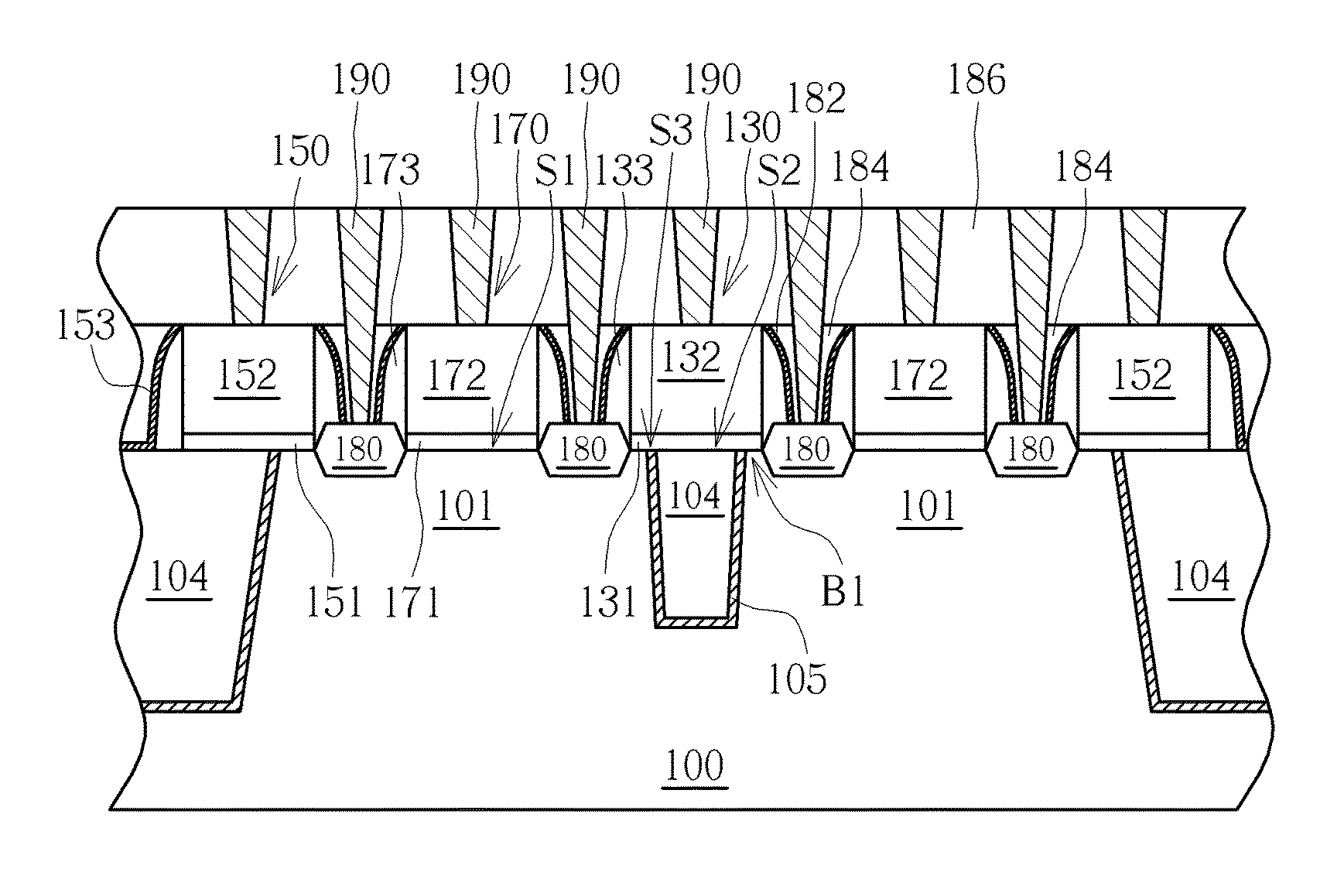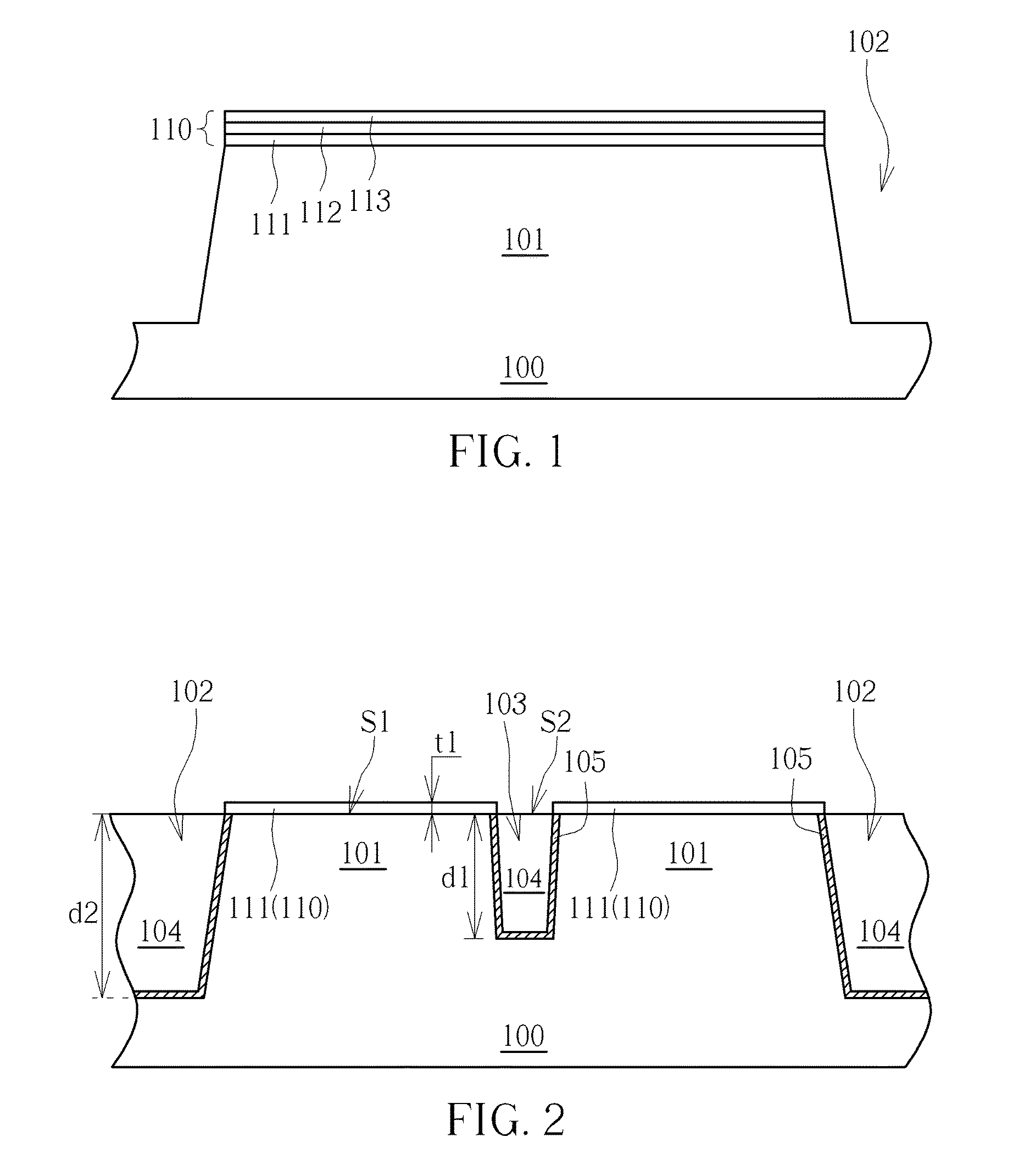Semiconductor device and method for fabricating the same
a technology of semiconductor devices and contact plugs, which is applied in the direction of semiconductor devices, semiconductor/solid-state device details, electrical apparatus, etc., can solve the problems of poor accuracy affecting the interconnection of contact plugs and overall performance of the device, the integration of metal gates and contact plugs still faces some problems in conventional finfet fabrication, and achieves the effect of dramatic increasing the integration
- Summary
- Abstract
- Description
- Claims
- Application Information
AI Technical Summary
Benefits of technology
Problems solved by technology
Method used
Image
Examples
first embodiment
[0016]Please refer to FIG. 1 to FIG. 6, which are schematic diagrams illustrating a method of forming a semiconductor device according to the present invention, wherein FIG. 4 shows a top view of the semiconductor device in forming steps. First of all, as shown in FIG. 1, a substrate 100 is provided, the substrate 100 for example includes a semiconductor substrate, such as a silicon substrate, a silicon-containing substrate or a silicon-on-insulator (SOI) substrate, and at least one fin structure 101 is formed in the substrate 100. In an example of bulk silicon, the fin structures 101 may be formed preferably through a sidewall image transfer (STI) process. The process may include forming a plurality of patterned sacrificial layers (not shown in the drawings) on the substrate 100 by using a photolithography and an etching process, performing a depositing and an etching processes sequentially to form a spacer (not shown in the drawings) at sidewalls of each of the patterned sacrifici...
second embodiment
[0033]Please refer to FIG. 7 to FIG. 8, which are schematic diagrams illustrating a method of forming a semiconductor device according to the present invention. The difference between this embodiment and the first preferred embodiment mentioned above is that the material of the insulating layer 104′ in the trench 103 is different from that of the insulating layer 104 in the trench 102. Preferably, the insulating layer 104 can be formed of materials such as silicon oxide, and the insulating layer 104′ can be formed of materials such as silicon nitride, but not limited thereto. In addition, the top surface of the insulating layer 104 (also the top surface of the STI) is lower than the top surface of the fin structure 101 or the top surface of the insulating layer 104′. Therefore, the gate structure 170 formed in the following steps can still cover on the top surface and two sidewalls of the fin structure 101, thereby increasing the channel width of the device. Other features in this e...
third embodiment
[0035]In addition, please refer to FIG. 9, which is schematic diagrams illustrating a method of forming a semiconductor device according to the present invention. In this embodiment the depth of the insulating layer 104″ is deeper than that of the trench 102. Other features in this embodiment are similar to that of the second preferred embodiment mentioned above, and will not be redundantly described here.
PUM
 Login to View More
Login to View More Abstract
Description
Claims
Application Information
 Login to View More
Login to View More - R&D
- Intellectual Property
- Life Sciences
- Materials
- Tech Scout
- Unparalleled Data Quality
- Higher Quality Content
- 60% Fewer Hallucinations
Browse by: Latest US Patents, China's latest patents, Technical Efficacy Thesaurus, Application Domain, Technology Topic, Popular Technical Reports.
© 2025 PatSnap. All rights reserved.Legal|Privacy policy|Modern Slavery Act Transparency Statement|Sitemap|About US| Contact US: help@patsnap.com



